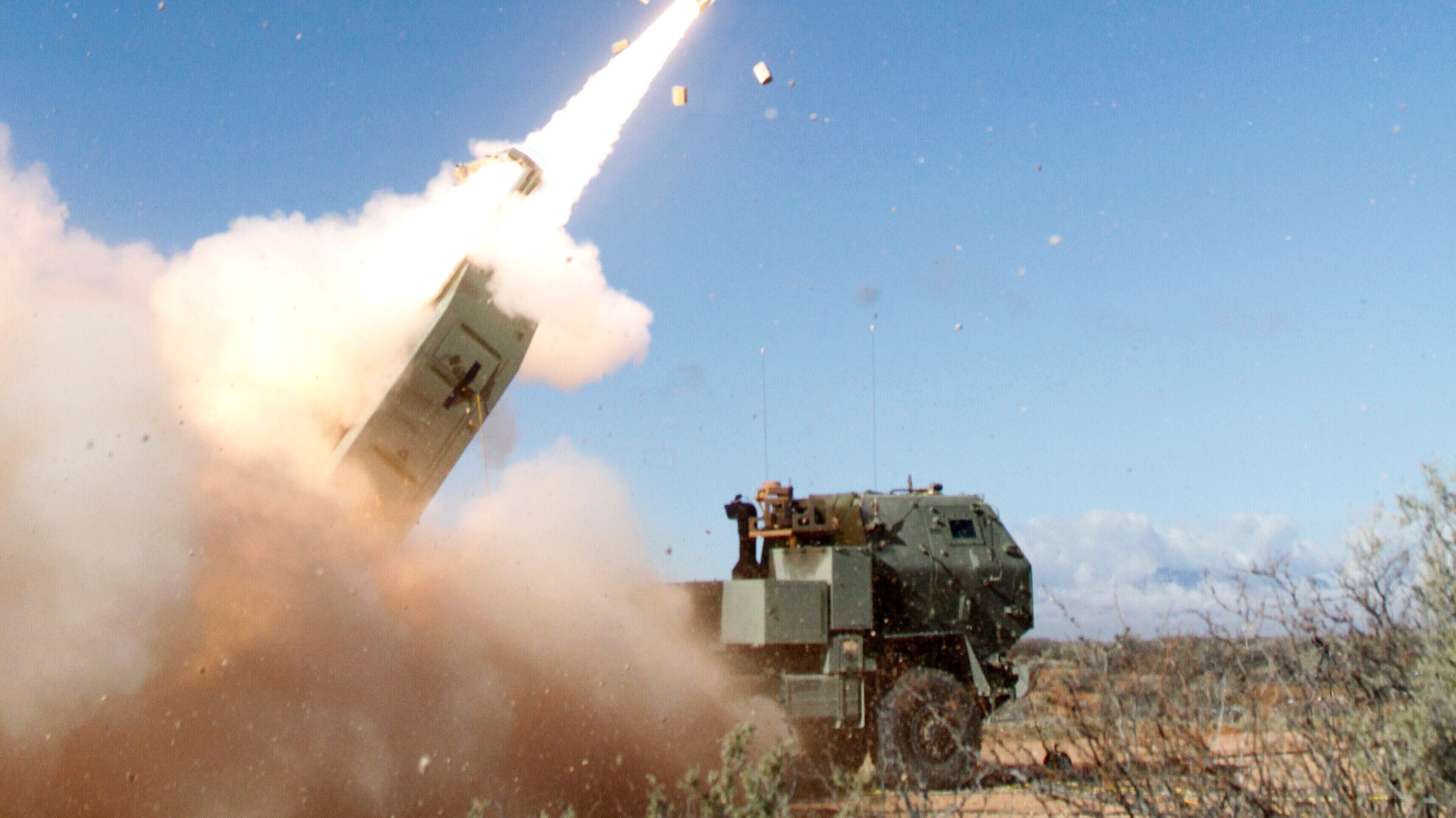
Lockheed’s prototype Precision Strike Missile (PrSM) fires from an Army HIMARS launcher truck. (US Army)
AVALON AIR SHOW — Senior executives from Lockheed Martin believe the United States is open to loosening arms export restrictions on the manufacture by Australia of some of its highly advanced weapons, with one executive declaring the issue is “turning a corner.”
In a briefing to Australian industry on Friday, Lockheed invited companies with capabilities to manufacture missile components to step up. Tim Cahill, executive vice-president of Lockheed’s missiles and fire control division, said the US, historically reluctant to license foreign production of advanced weapon systems, was turning a corner.
“It has become far more open to opening up those supply chains and to allowing a build, particularly of some of more sophisticated system, build them overseas completely,” he said.
If that’s the situation, an early test could be missiles for the M142 HIMARS, with the US approving sale of 20 systems and a mere 130 missiles to Australia in May last year. The first HIMARS will be delivered in 2025, and a HIMARS system was on display at Australian International Airshow in Avalon, Victoria.
Most precision munitions used by the Australian Defence Force (ADF) are sourced from the US, with concerns routinely expressed that in any conflict, inventory could be quickly exhausted.
Consequently, Australia has launched the Guided Weapons and Explosive Ordnance (GWEO) enterprise to develop domestic production of precision guided munitions. US-firms Lockheed Martin and Raytheon, which make most of the PGMs in Australian service, were chosen as strategic industry partners.
HIMARS has proved to be one of the signature weapon systems of the Ukraine conflict, delivering devastating precision strikes on Russian forces. Damien McMahon, Lockheed Martin business development manager for the missiles and fire control division, said the company was working through GWEO to understand the capabilities of local firms to develop rocket technology including motors, control systems and warheads.
“We build the systems and the missiles for this. The Commonwealth has asked us to help provide them some advice so they can improve their understanding of whether this is something GWEO would like to do,” he said.
As to the US agreeing to allow release of this technology, Paula Hartley, Lockheed Martin, vice-president for enterprise performance for the missiles and fire control division, said that was a conversation that was occurring between the US and Australia “as we speak.”
Though GWEO includes missile research and development and better storage, Lockheed doesn’t see Australia developing unique missiles incompatible with ally systems. In truth, it has been since the 1950s when Australia last developed a missile, and then it was in conjunction with the UK. Known as the Malkara, the weapon was an enormous wire-guided anti-tank rocket which saw brief service with the British Army but ironically was never adopted by Australia.






















